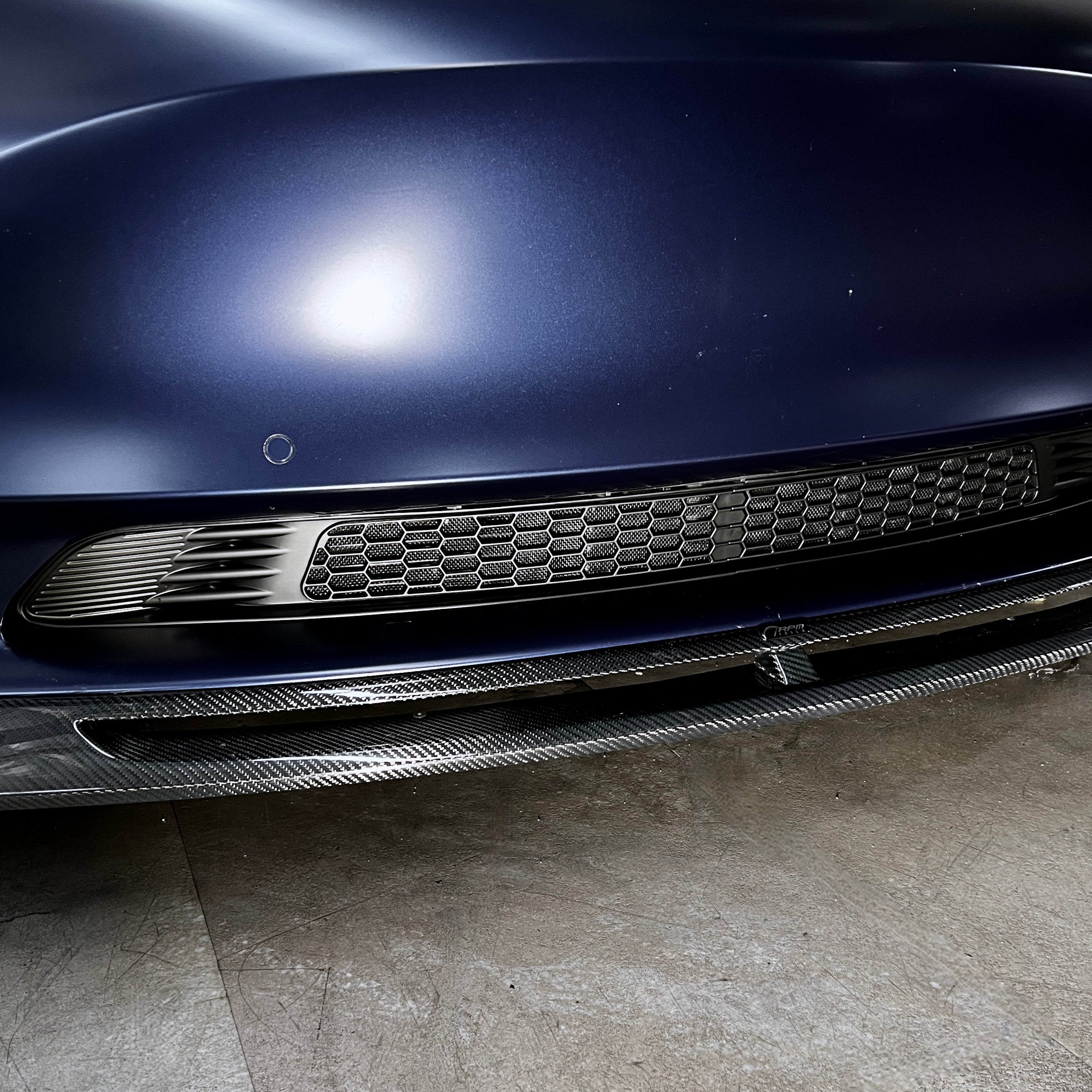Some days ago I came across a video about someone who was inspecting his radiator
So that made me wonder, how dirty is my radiator. I bought this Tesla 2nd hand and when I replaced the cabin air filters there was like a ton of leafs and dead bugs in it.
The car has 65.000 km on it and it is a 2019 model 3.
Since it is winter right now and I dont supercharge alot I dont really worry much about the coolant part of the car.. but it will get summer eventually and I will supercharge one day.
So i let the car run and the front grill opend up and I took a look inside, just a few leaves and a rock where lying on the bumper infront of the radiator.. but I did not see a lot of debris. Of to a good start.
So I removed to interal frunk and managed to slightly open te radiator housing / duct and between te 2 radiators and behold, there was like a ton of cooked up debris in there.. like litterly stuck. I guess it would have made the coolant part of the battery pack a bit worse. It was a lot worse then on the video displayed there.
I managed to get a long flexible soft stick and poke it around a bit between the two radiator (be carefull not to bend the radiator fins), after poking it around I flushed from the top down with water. Still alot of debris would not budge at all....
Anyone know how to remove the plastic housing so I might be able remove or move the top radiator and give it a good clean with a soft brush?
I might be overthinking things but isent this a big design flaw that there is no way for the debris to get out from the ducting?
It is basicly a closed ducting and everything getting in there is bound to stay there forever... stuck between the two radiators to rest there for all eternity.
So that made me wonder, how dirty is my radiator. I bought this Tesla 2nd hand and when I replaced the cabin air filters there was like a ton of leafs and dead bugs in it.
The car has 65.000 km on it and it is a 2019 model 3.
Since it is winter right now and I dont supercharge alot I dont really worry much about the coolant part of the car.. but it will get summer eventually and I will supercharge one day.
So i let the car run and the front grill opend up and I took a look inside, just a few leaves and a rock where lying on the bumper infront of the radiator.. but I did not see a lot of debris. Of to a good start.
So I removed to interal frunk and managed to slightly open te radiator housing / duct and between te 2 radiators and behold, there was like a ton of cooked up debris in there.. like litterly stuck. I guess it would have made the coolant part of the battery pack a bit worse. It was a lot worse then on the video displayed there.
I managed to get a long flexible soft stick and poke it around a bit between the two radiator (be carefull not to bend the radiator fins), after poking it around I flushed from the top down with water. Still alot of debris would not budge at all....
Anyone know how to remove the plastic housing so I might be able remove or move the top radiator and give it a good clean with a soft brush?
I might be overthinking things but isent this a big design flaw that there is no way for the debris to get out from the ducting?
It is basicly a closed ducting and everything getting in there is bound to stay there forever... stuck between the two radiators to rest there for all eternity.




